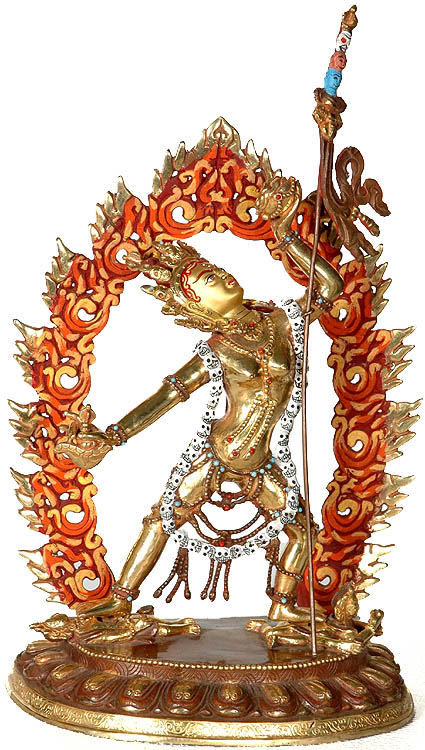The five Dhyani Buddhas family, each of every Buddha it uniquely different from each others and appearing with different mudras. The five dhyani buddhas are representations of the five qualities of the Buddhas.These five Buddhas are a common subject of Vajrayana Mandalas.
When these Buddhas are represented in mandalas, they are not always the same colors or be related to the same directions. The five Dhyani Buddhas can be described as follows :-
- Ratnasambhava Buddha. 寳生如來
- Akshobhya Buddha. 阿閦如來
- Vairocana Buddha. 毘盧遮那佛 / 大日如來
- Amithabha Buddha. 阿彌陀佛
- Amoghasiddhi Buddha. 成就如來
Ratnasambhava Buddha he is represents the Ratna family. He is the Buddha of the South direction.
His syllable is "Tram"
His color is in gold and yellow signifies the South.
His element is signifies or represents earth.
His symbolism is signifies the jewels.
His wisdom is signifies as equanimous.
His right hand mudra is signifies as giving.
He is symbolize the season of Spring.
His consort is Mamaki.
His Dhyani Bodhisattva is Ratnapani.
His Pure Land is called Shrimat. the Southern Pure Land.
Akshobhya Buddha.阿閦如來 to be continued in part 2
Dedication of merits
May those who read and sharing of this blog's information be peaceful and joyful. May the Buddha Dharma be flourished and the merits will be dedicated to the sentient beings











